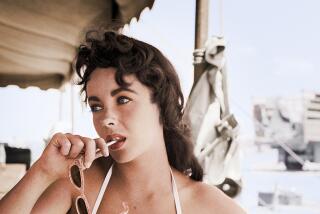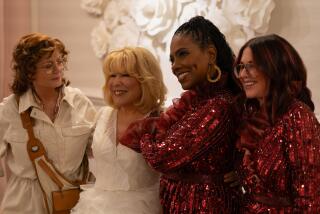Classic Hollywood: ‘Thelma & Louise,’ 20 years later
It didn’t take long for Geena Davis to realize the impact of “Thelma & Louise” after it opened in May 1991.
“On the opening weekend, women would stop me in the store saying that ‘The movie changed my life,’” recalled the Oscar winner (“The Accidental Tourist”). The women would tell her, ‘You have no idea what that movie meant to me. My friend and I are going to act out the trip.’”
“Thelma & Louise” was an anomaly among that year’s summer movies; the majority of the box-office hits were testosterone-driven action films such as “Terminator 2: Judgment Day” or comedies such as “City Slickers.”
A reinvention of the buddy movie, “Thelma & Louise” starred Davis as Thelma and Susan Sarandon as Louise, great friends who feel trapped in their mundane lives, so they decide to go on a fishing trip. But they end up being chased by the police after Louise kills the rapist who attacked Thelma. The film’s conclusion in which the women decide to drive over a cliff in their vintage Thunderbird rather than face being captured by the police is still discussed and even parodied two decades later.
Directed by Ridley Scott and penned by newcomer Callie Khouri, “Thelma & Louise” became an instant pop culture touchstone. It earned six Oscar nominations — Sarandon and Davis were both up for lead actress — with Khouri winning for her original script. “Thelma & Louise” also featured Brad Pitt in a colorful supporting role as J.D., a handsome drifter — Who can forget those abs?! — with whom Thelma becomes intimate only to discover he has stolen their money.
On Thursday, the Academy of Motion Picture Arts and Sciences will celebrate the film’s 20th anniversary at the Samuel Goldwyn Theater. Davis, producer Mimi Polk Gitlin and Khouri are scheduled to appear at the screening. (The evening is sold out, but there will be a standby line that evening.)
Though Sarandon is working and unable to make it to the screening, she recently chatted on the phone about her experiences making the film.
She said she and Davis were surprised by the visceral reaction to the film.
“We didn’t see it coming,” said Sarandon, also an Oscar winner, for 1995’s “Dead Man Walking.” “I thought I was making a cowboy movie with women in trucks. I thought it would be fun.” Regarding the response to the controversial ending, Sarandon noted, “I am not sure if people really knew what was disturbing them because it certainly wasn’t any more condoning suicide than ‘Butch Cassidy and the Sundance Kid.’ Certainly the body count was minuscule compared to movies with guys. I think [the controversy] had more to do with sexism than violence.”
“I thought we were working with a great script,” said Davis. “It was a wonderful story, and it was unusual of course in that it had two really well-written female characters. I don’t think any of us had any expectations about it striking a nerve.”
Davis recalled that when the movie made the cover of Time magazine shortly after its release, the issue also had negative commentary from “writers who felt they had to weigh in on what a bad development this was because women have guns. I don’t think they commented that much on the ending, but [they were saying] so now women are supposed to imitate men and resort to violence.”
Davis and Sarandon instantly bonded while shooting the film on location summer 1990 in Moab, Utah. “She was great and funny and professional and smart as a whip,” said Sarandon. “We became very close,” added Davis. “I just fell in love with her immediately, and we had a great relationship. Every once in a while she would say how nice it was to work with a girl. It was wonderful.”
One man who was a key figure was director Scott, known more for his sci-fi classics “Alien” and “Blade Runner” than relationship dramas. “I really thought he got the whole thing and executed it brilliantly and brought some scale to it that wasn’t necessarily in the script,” said Davis.
“It could have been just a little story,” said Sarandon. “But Ridley put us in such a heroic setting and made it so big. It was his powerful visual brilliance that really gave us that iconic stature. I think that made the movie something special.”
For more information go to https://www.oscars.org
More to Read
The biggest entertainment stories
Get our big stories about Hollywood, film, television, music, arts, culture and more right in your inbox as soon as they publish.
You may occasionally receive promotional content from the Los Angeles Times.











